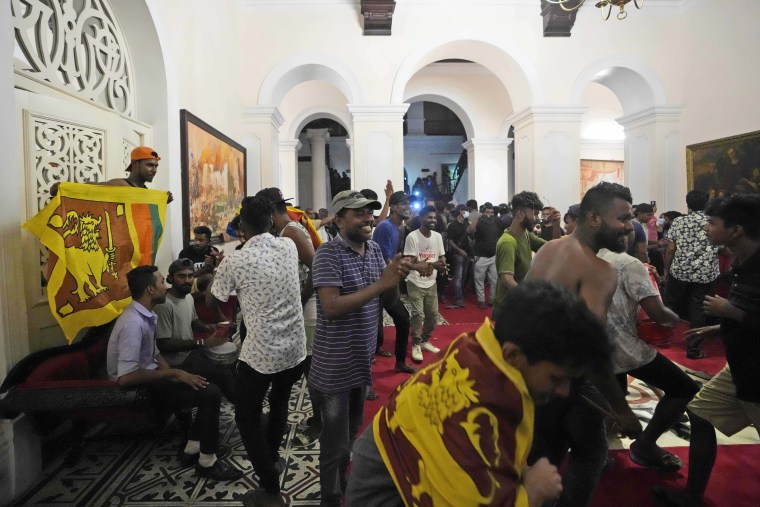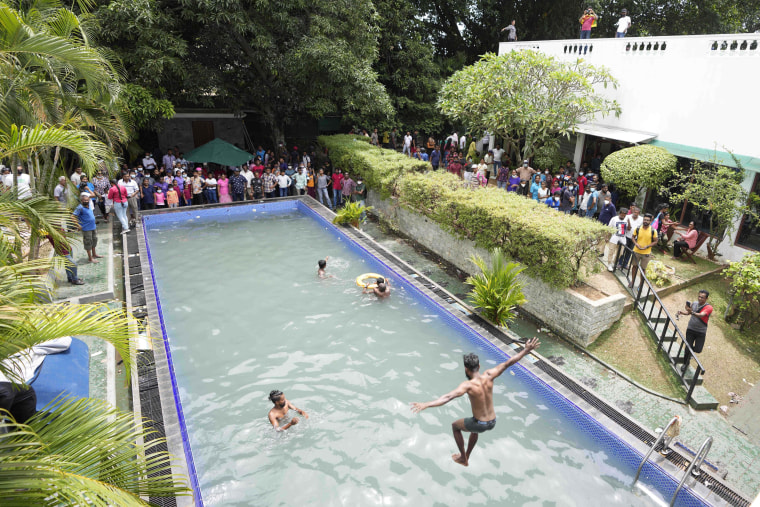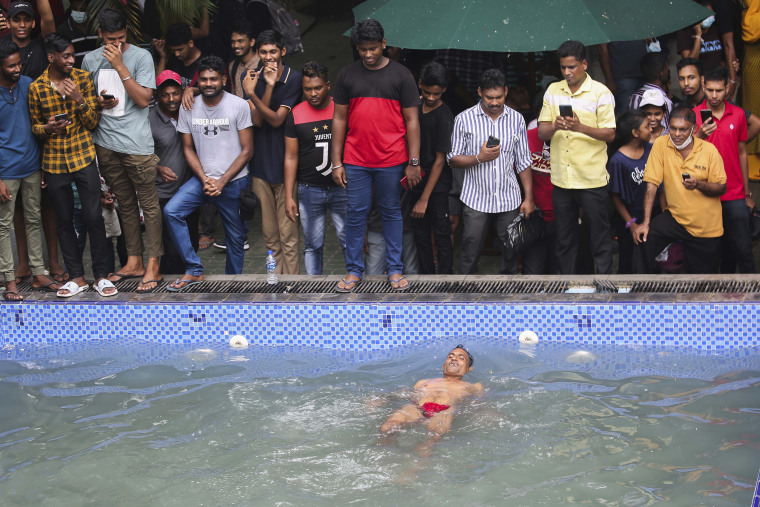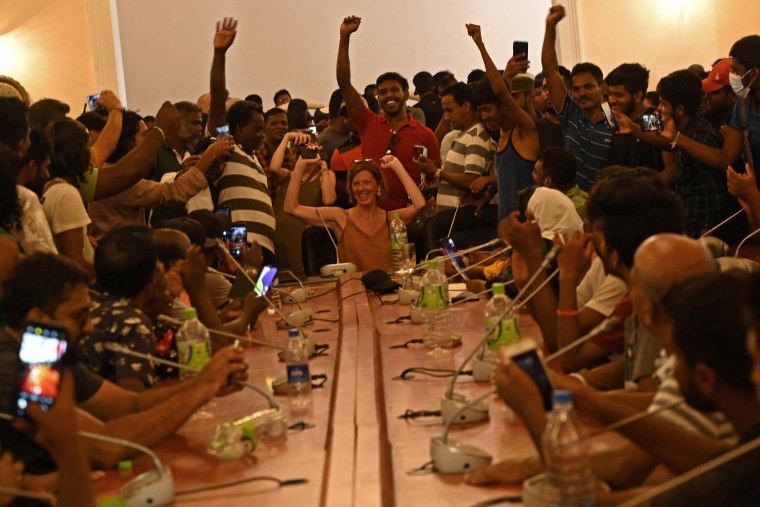Sri Lankan President Gotabaya Rajapaksa and his entire Cabinet are set to resign this week, with outrage over the country’s economic crisis boiling over and protesters at their doorstep — literally.
On Saturday, tens of thousands of protesters seized Sri Lanka’s capital buildings, including the official residence of Rajapaksa and Prime Minister Ranil Wickremesinghe, in the largest day of protests that have been escalating for months. Photos and video of hundreds of demonstrators taking smiling selfies, frolicking in a swimming pool and singing, dancing and waving the national flag in opulent rooms just underlined the magnitude of the changes afoot in the South Asian island nation.
The prime minister’s office, in a statement Monday, confirmed Rajapaksa's decision to step down this week, although he has not made any direct public statements himself.
Soaring inflation and government debt have left the nation of 22 million with dire shortages of food, medicine and fuel, with citizens taking to the streets to demand accountability. Many blame Rajapaksa and his family, which has dominated Sri Lankan politics for years, for mismanaging the nation’s finances and contributing to the crisis.
Thousands descended on Rajapaksa’s official residence in Colombo, Sri Lanka’s commercial capital, on Saturday, demanding his resignation and chanting slogans.
Sri Lankan TV broadcasts and footage posted on social media showed protesters successfully storming the building after breaking through security cordons, with soldiers and police officers failing to hold back the crowd.

Reuters reported that Rajapaksa was not on the premises, having evacuated Friday as a safety precaution ahead of the planned protests, according to two defense ministry sources.
Home to the Rajapaksa family’s political dynasty for most of the last two decades, the colonial-era presidential palace quickly fell to citizens.
Soon after gaining control of the residence, protesters were photographed dancing and celebrating, with many sporting the Sri Lankan flag.
The next target was the nearby private residence of Wickremesinghe, who has only been prime minister since Rajapaksa’s brother resigned in May. The estate was set ablaze by protesters after a clash with police.
That day, the parliament speaker’s office announced that Rajapaksa would resign in a video statement. Wickremesinghe’s office also indicated his willingness to quit.

The announcement was met with celebrations from protesters but also skepticism with capital occupiers remaining at their posts.
The festivities continued into Sunday, with the abandoned Capitol estate becoming a spectacle for protesters and onlookers. Photos captured crowds enjoying the Sunday aftermath and touring the up-scale property, with seemingly little push back by authorities.
Some visitors decided to cool off by frolicking in the president’s swimming pool.

In contrast to earlier scenes of chaos, protest and vandalism, by Sunday the main living hall had turned more peaceful, with protesters and onlookers calmly strolling through and taking pictures as if in a museum.
In the prime minister’s residence, much of which survived the fire, occupiers lounged and enjoyed a standard of luxury diametrically opposed to most Sri Lankans’ living conditions.

Protesters remain in the capital with continued calls for Rajapaksa to step down.
Reuters reported that at least 39 people, including two police officers, were injured and hospitalized during the protests, according to hospital sources.
With a small victory won, Sri Lanka’s economic situation, on the whole, remains uncertain.

Political instability could disrupt ongoing negotiations between the government and the International Monetary Fund for a $3 billion bailout and debt restructuring package to aid the Sri Lankan economy.
According to Sri Lankan’s Constitution, Parliament must elect a new president within 30 days when the position is vacated.